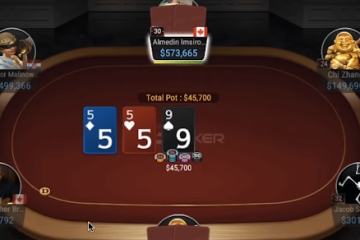From Spacewars to scholarships: how esports got taken seriously

Over the last decade or so, the world of esports has proven itself to be a multi-million-dollar industry, with its own leagues, pro-teams and a global following of fans that flock to both live and streamed tournaments. Competitive video gaming attracts major sponsorship, offers life-changing prize pools and is even taught in universities. Meanwhile, the debate over whether esports players should be recognized as legitimate athletes is slowly moving in the players’ favor, with many US colleges offering likely students the same kind of scholarships they offer to varsity-level football players.
Others would suggest that the skills demonstrated by esports players are closer to those needed by professional gamblers. Just as esports pros may get started playing on home consoles for fun, so budding gamblers can hone their abilities by using NJ online casinos bonus codes, so that they can utilize some free in-game currency and stand a chance to win prizes.
Playing for keeps
Pro esports players and pro gamblers are both pro gamers, and so need the same combination of self-discipline and self-motivation. Even though huge fortunes can be won in their profession, being driven solely by money or fame is a sure way to burn out. Players should love to win, but be able to lose gracefully. They should enjoy competing and developing skills like self-confidence and self-possession, strategy and concentration.
Of course, in both fields, different games require different specific skills. But good problem-solving abilities, patience, persistence and the ability to think clearly under pressure are essential. In the long term, both gamblers and esports players need to work to achieve a good work-life balance, as it’s easy for the game to take over. But with good time management and plenty of practice, it’s possible to earn a very satisfying living in both professions.
Early days
Esports, or electronic sports, are defined as any organized video game competition, although generally the term is recognized as referring to organized multiplayer tournaments, or series of tournaments, involving professional entrants participating either individually or in teams.
As such, esports began to emerge in the 1980s, but some trace it back to the “Intergalactic Spacewar Olympics” held on October 19, 1972, at Stanford University, in which a small number of students competed to get the highest score at the early computer game Spacewar, with the winning prize being a year’s subscription to Rolling Stone.
Fast-forward nearly a decade, and the 1980 Atari Space Invaders Championship is considered the first official competitive gaming event, with 10,000 contestants and considerable media attention. The recording of high scores on arcade machines like Space Invaders and Asteroids meant early gamers could compete informally with each other, a phenomenon given a boost when Iowa arcade owner Walter Day formed Twin Galaxies to keep an official log of high scores from arcade machines around the country.
Twin Galaxies sponsored the North American Video Game Challenge Tournament, and in 1983 the Electronic Circus US tour saw arcade players competing live in front of a paying audience, although these were more promotional events than serious contests. Nevertheless, the media attention created the first proto-esports celebrities, while broadcasters found that televised video game contests made for cheap and relatively popular cable TV programming.
Away from the arcades
By the nineties, attention had moved away from arcade games towards home console gaming, and the launch of Street Fighter II in 1991 revived the notion of a head-to-head contest in video games, something that had not been seen since primitive Atari table-tennis simulator Pong. Nintendo took Street Fighter II and other popular console games on the road with the Nintendo World Championship in 1990 and Nintendo Powerfest ’94 four years later. Between those two tours, Game Pro magazine teamed up with Blockbuster video to sponsor the World Game Championships for a number of years.
Getting organized
The 1996 ‘Battle By The Bay’ Street Fighter tournament in California attracted 40 entrants, but more importantly, it led to the formation of the Evolution Championship Series, AKA EVO, an ongoing tournament focusing on fighting games, and the Cyberathlete Professional League (CLP), the first professional esports league, which soon began hosting its own tournaments.
As the first professional esports players started attracting media attention, sponsorship deals pumped money into the sector and various short-lived attempts at satellite channels and shows purely dedicated to esports were launched. The field received another major boost with the launch in 1999 of Half-Life spin-off Counter-Strike, which soon outgrew its parent game to become the most popular multiplayer competitive game in the world, especially in Asia.
Counter-Strike launched as an official esport in 2001, with a $150,000 prize pot. In 2003, China recognized esports as an official sport on a par with basketball or football. The Asian Indoor Games in 2007 were the first to include esports as a medal-winning event, and it has been included ever since.
Going online
In the noughties, multiplayer console gaming was enabled by online services like Xbox Live, although DOOM had already pioneered remote multiplayer games in 1993 with its local area network (LAN) option. The rise of high-speed broadband made esports more accessible, and more teams, leagues and tournaments appeared. In 2000, there were maybe ten different tournaments worldwide; by 2010, there were about 260.
The launch of the dedicated games streaming platform Twitch in 2011 was quite literally a gamechanger, legitimizing the notion of esports and making them available to an online audience of millions.
In colleges
Although the status of esports is still being debated by athletic bodies in the West, since 2013, various US universities have granted scholarships to students who qualify to play professionally, just as they might to promising football players. In 2017 Tespa, the collegiate outreach division of Blizzard Entertainments, announced its own scholarships for university esports clubs that competed in its tournaments. Harrisburg University of Science and Technology began a tuition scholarship program for esports players to represent the school in 2019, and it looks likely more colleges will follow its example.
With esports currently attracting around 500 million viewers worldwide, and the industry expected to be worth $1.6bn by 2023, the appeal of the activity is growing. It seems likely that it will eventually be accepted as an Olympic sport and that professional players will be recognized as the mind-body athletes of the digital age.







